Toyota Mirai: hydrogen fuel cell proves a viable alternative to batteries for our electric cars
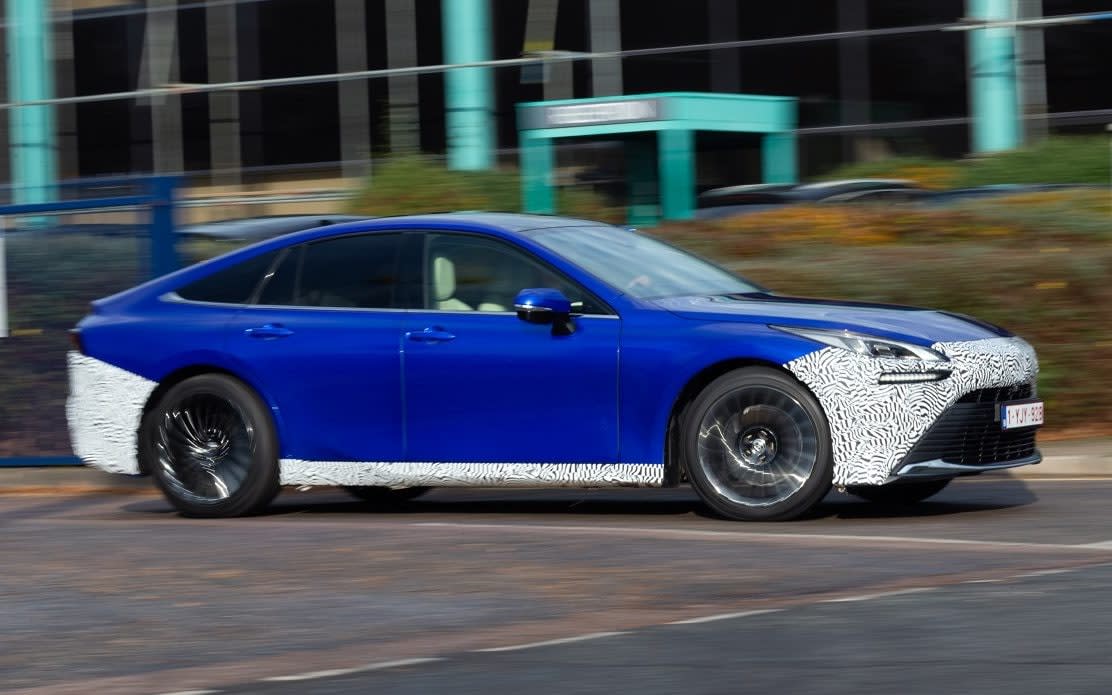
Even for someone who’s driven just about every hydrogen fuel-cell car produced so far, it was hard not to jump up and down with excitement at the prospect of Toyota’s second-generation Mirai. I’ve covered the fuel-cell beat for more than 30 years and, despite what you might hear, this technology is ready and waiting for some serious commitment.
If you’re unfamiliar with the concept, or assumed that all electric cars (EVs) are powered by batteries, a fuel cell is a catalytic electricity generator fuelled with hydrogen gas.
Fuel cells can produce electricity continuously as long as they have a supply of fuel and oxygen, while the only “exhaust” is drinkable water.
The principle was discovered by Sir William Grove, Welsh scientist and justice of the peace, in 1839 but it wasn't really feasible until the mid-20th century.
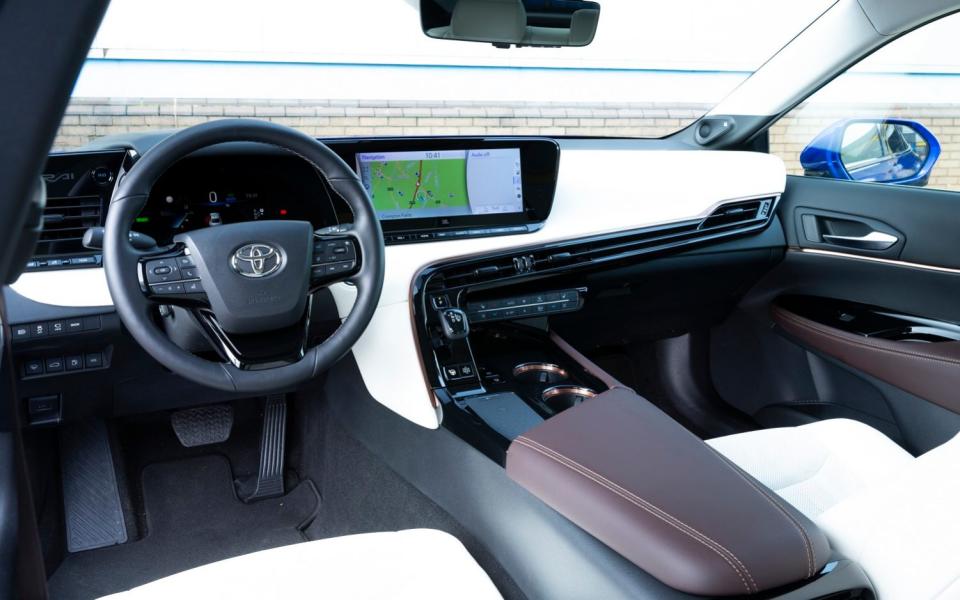
In 1955 General Electric’s Willard Grubb and Leonard Niedrach produced the first hydrogen- and oxygen-fuelled, proton exchange membrane (PEM) fuel cell. British engineer Francis Thomas Bacon and his team at Cambridge University helped develop the practical PEM fuel cell, which provided power for the Nasa’s Nasa Gemini Space shots in the Sixties.
Since then PEM cells have been used in most prototype and production fuel-cell cars, though its history has been as much about pioneering and visionary engineers and scientists as much as about the technology.
From Mercedes-Benz’s 2001 A-class F-cell, to General Motors’ 2002 Autonomy and 2006 Sequel, Honda’s 2017 Clarity and Hyundai’s 2018 Nexo, each new model has got more efficient, more robust, faster and just, well, better.
My first drive in a Toyota fuel cell was way back in the mid-Nineties in an experimental SUV called the Kruger/Highlander, a hissing, whirring US-style soccer-mom’s sport utility doing hard service with the Californian Fuel Cell Partnership (CaFCP). This was, and still is, a sort-of mutual support group for this nascent technology, a neutral ground where car makers could test their wares and exchange information with fuel suppliers, safety and environmental groups, and each other.
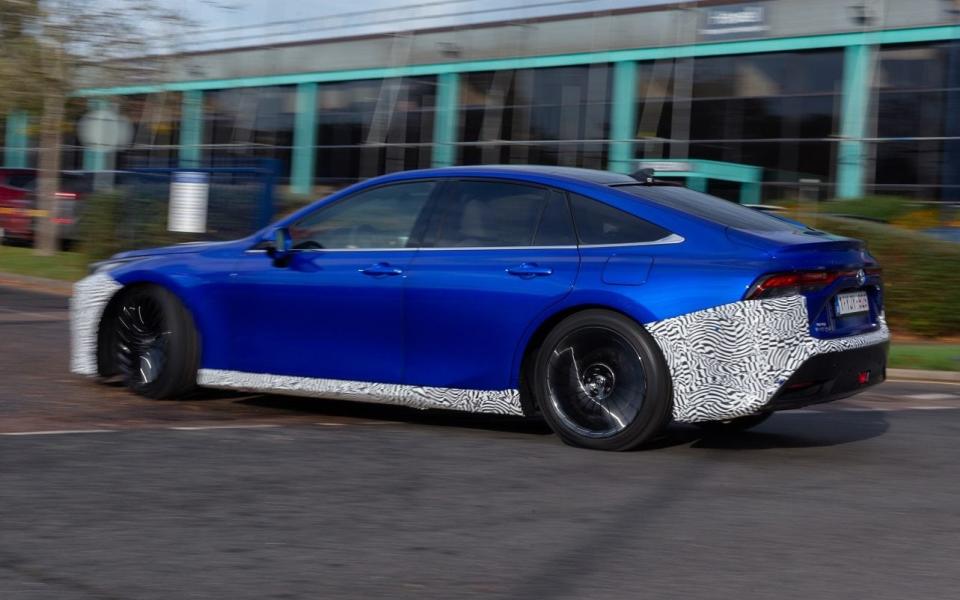
It was a remarkable time, when we truly believed that hydrogen fuel cells (alongside battery-electric power) could play an important part in the future of individual mobility – some of us still do.
Proof of concept: the first Mirai
Toyota’s first Mirai of 2014 showed just how serious it was about fuel cells, which most car-company chief engineers see as an end game for individual mobility, as well as heavy transport and marine applications. So much so that Toyota was even helping to develop a series of filling stations on both coasts of the USA.
A quarter of decade and countless squillions of research and development had resulted in a state-of-the-art, showroom-ready, four-door saloon, capable of 111mph and 0-62mph in 9.6sec – with a realistic range of 300 miles from the 5kg of hydrogen stored at 10,000psi in two tanks under rear seats. Refuelling took five minutes; I know because I tried it.
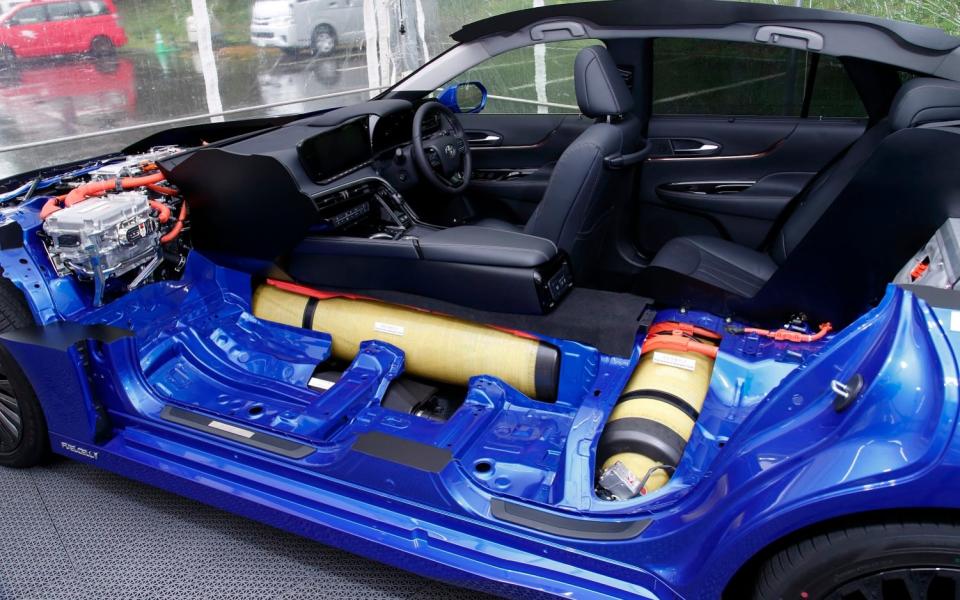
Toyota had gone back to its loom-making roots by manufacturing its own immensely strong yet light woven carbon-fibre tanks, as well as the 153bhp/247lb ft fuel cell.
Compared with its 2008 FCEV Toyota Highlander, Toyota claimed it had reduced costs by 95 per cent and wanted to sell tens of thousands by 2020.
That hasn’t exactly happened, although its global sales of 11,000 Mirais is pretty impressive, with more than 800 sold in Europe including 191 in the UK. Especially so when you consider that the retail price was £66,000 with a monthly rental of £750.
Second generation moves the game on
Mirai II is bigger, more powerful and efficient, and with a significantly longer range of about 390 miles in real-world conditions. This near-production-ready prototype is doing a European tour prior to going on sale in March 2021 at a price promised to be 20 per cent lower than its predecessor, so reckon on under £53,000 without the Government’s £3,000 plug-in grant.
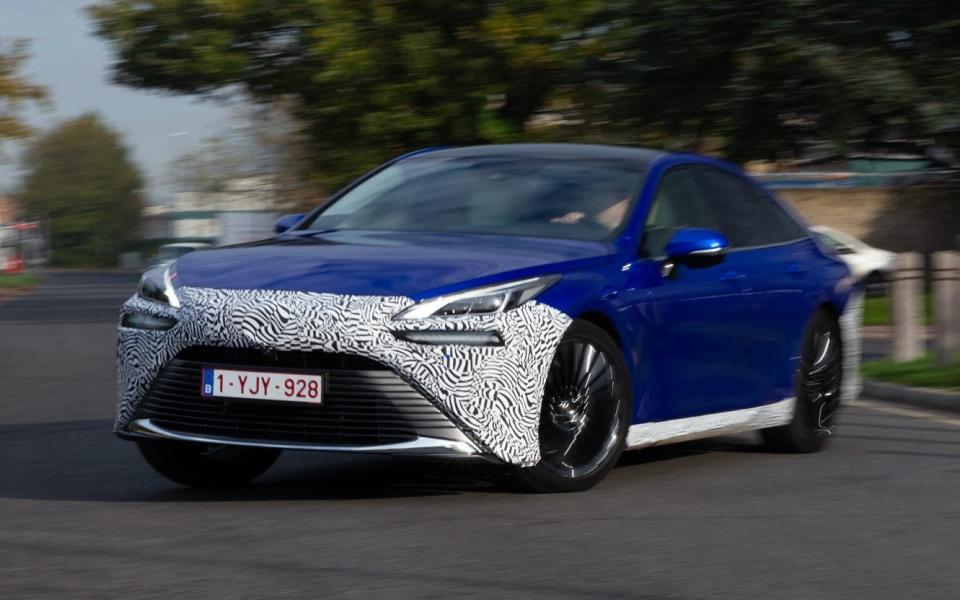
Where the previous, front-wheel-drive model was based on a platform shared with older models of the RAV4, Corolla and Prius, this rear-driven platform is based on the Toyota New Generation Architecture.
Why rear-wheel drive? A number of manufacturers are adopting this configuration for their alt-fuel cars, including the BMW i3, Volkswagen ID.3 and now Toyota. The Japanese company claims it’s a more space efficient and dynamically pleasing configuration.
The fuel cell has been changed, too. With fewer cells and greater power, it’s more efficient in terms of space per kilowatt and output per cell. The 24-litre-sized unit pumps out 172bhp feeding a new, more powerful (179bhp/221lb ft) main drive motor. The 0-62mph acceleration time is reduced to 9.2sec, while the top speed is also reduced slightly, to 109mph.
Toyota has finally adopted lithium-ion for the buffer battery, which smoothes the fuel-cell’s power delivery and recaptures braking energy as volts. As with its predecessor it’s tiny, with an energy capacity of 1.24kWh.
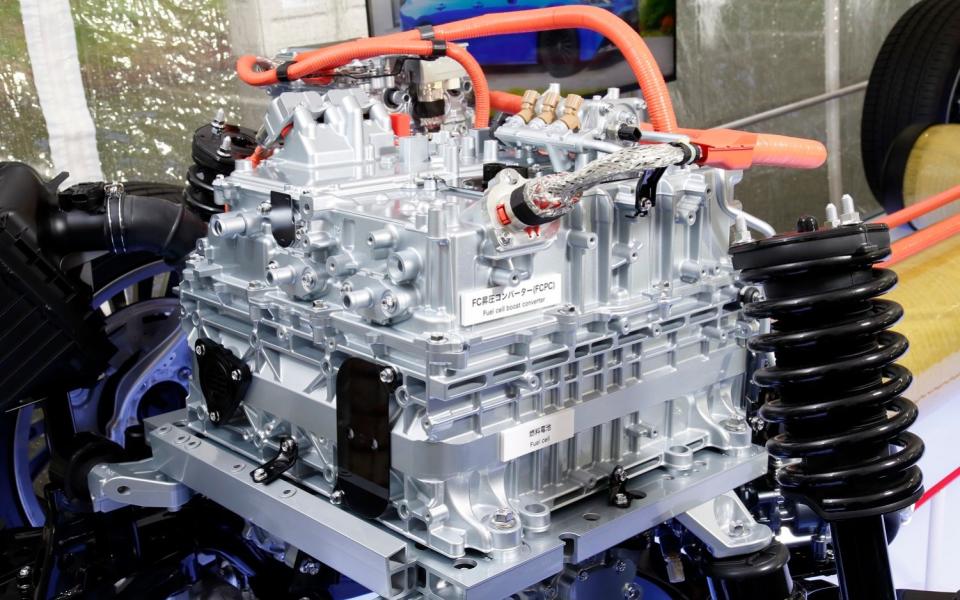
There are now three instead of two hydrogen tanks, mounted in a T-shape with a long tank along the centre line and two located laterally under and behind the rear seats. Between them they hold a maximum of 5.6kg of hydrogen gas compressed to 700Bar (10,000psi).
As ever, Toyota does some quite clever stuff across the drivetrain. Each fuel cell in the stack is 20 per cent thinner, fuel economy is up by 10 per cent thanks to a more efficient proton exchange membrane, current converters and the electronic and cell control systems.
Significantly, compared with the outgoing model, it takes seconds to produce instead of 15 minutes. Even the spun-carbon fuel tanks have one third fewer windings but are equally strong.
Size matters
At a whisker under five metres in length, this is a big saloon, a body style popular in the US and Japan. Opinions will differ about the appearance, but to my mind the proportions are more classically handsome and it’s a lot less wacky than its predecessor.
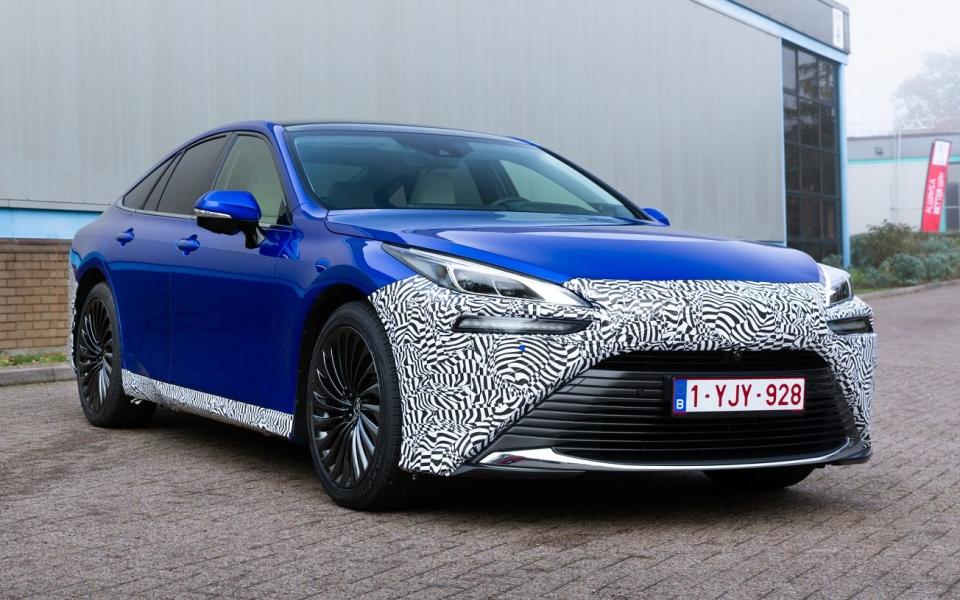
The interior is somewhat more conventional, too, though the facia design is very far eastern, with cross-cockpit sweeps of white and dark grey materials and soft diagonals that don’t appear to do very much. It’s not unattractive, but absolutely not German-exec style, either. The front seats are comfortable and plush and there’s lots of space and useful cubby holes.
The all-digital facia is clear, but not always obvious. So, the power/charge meter is easy to read and gives a concise snapshot of what the drivetrain is doing, but you need to search harder for the hydrogen tank contents or range which, given the scarcity of UK hydrogen refuelling stations, is arguably more useful.
And the fuel consumption display is really only of use against other fuel-cell cars, displaying efficiency in terms of kg of hydrogen per 100km – I achieved 1.27kg/100km, for what it’s worth.
The hydrogen tanks mean the back seats aren’t the most spacious, with limited leg room and headroom restricted by the large sunroof. You’ll get five large adults in there, but it’s no limousine. The boot is adequate, but the floor is high and it’s really only big enough for one big suitcase and a couple of airline carry-on bags.
On the road
Even at idle there’s a lovely turbine whirr as the compressor forces air into the fuel cell. It also feels like it wants to go, with a fair bit of creep built into the drivetrain and no sense of that two-tonne kerb weight, at least from a standstill. It also whirrs mightily when you switch off, as the compressor purges the cell of water.
The performance is brisk and it will try and spin the wheels if you floor it from a standstill. It’s not lightswitch-quick like some electric cars, but there’s an impression of a big power unit working against a load, with a progressive rate of acceleration that feels like a turbodiesel engine.
That natural and intuitive feel is further confirmed by the way the drivetrain whirr matches the road speed so you have an audible link with how fast you are going.
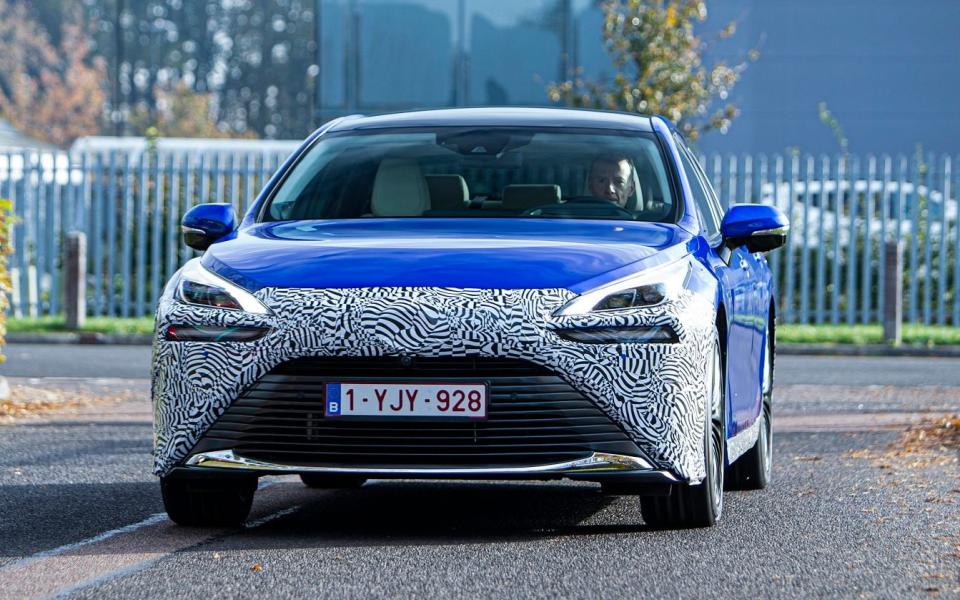
First impressions are that this prototype chassis is very soft, “breathing” with bumps but also flopping about on serious undulations like a fat seagull bouncing on a telegraph wire. The damping allows the springs full rein to isolate the chassis, but on damaged Sussex B-roads the result is a bit queasy.
It also corrupts the otherwise precise steering and the excellent brakes, which pitch the nose down on the smallest application. This is a particular sadness as Toyota has just about cracked mixing friction and retardation braking as seamless stopping and the new Mirai should be no exception.
Turn it into a corner and the chassis tips on its 20-inch wheels almost like a Sixties American muscle car, but ultimately the damping control is much better than that. So too soft perhaps? For European, sporting-obsessed customer markets, possibly, but this car isn’t designed for you and I.
Who’s going to buy it?
It’s designed for North America, where fuel-cell cars are taken seriously and such ride qualities are prized and soften the carbine staccato of hard suspension on concrete interstates. It’s designed for far eastern markets, where governments have mandated investment in a hydrogen infrastructure and soft, luxurious limousines take the sting out of long periods in mega-city mega jams.
And it’s designed for the chauffeur and private-driver markets, such as Jonny Goldstone at Green Tomato Cars in the UK, a chauffeur fleet which has a fleet of first-generation Mirais and wants to run these second generation models. Or Hype, the Paris-based cab firm, which wants to have a fleet of 600 fuel-cell vehicles in the French capital by 2024, the year Paris hosts the Olympics. Professional drivers can’t afford to hang around waiting for an electrical charge-up and are doing more than most to create a hydrogen refuelling infrastructure.
It is interesting that Hyundai is already talking about selling its Nexo fuel-cell technology to Ineos for its Grenadier, a 4x4 utility aimed at taking over from where the previous Land Rover Defender left off. So what about London cabs, the LECV or the Metrocab?
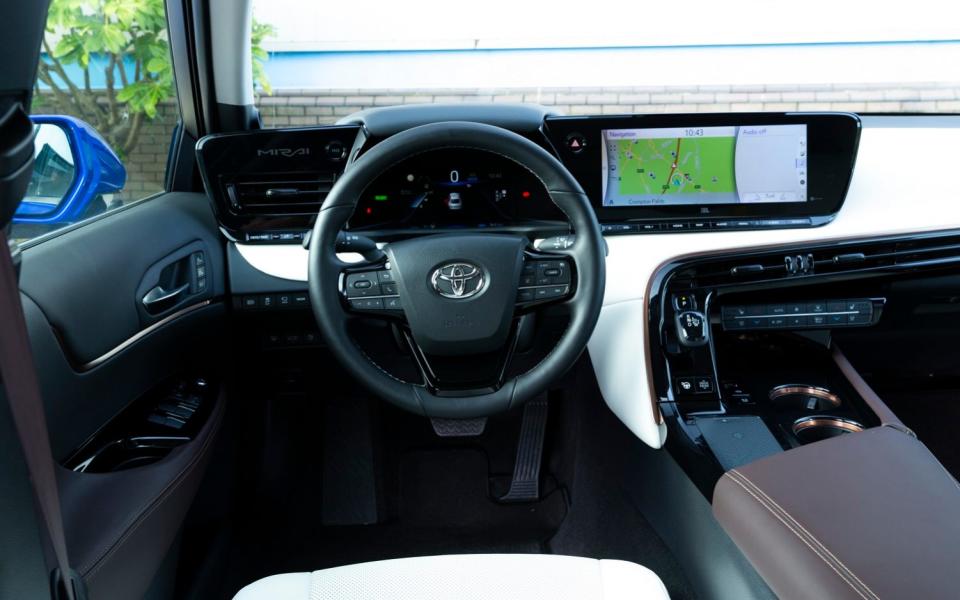
There’s a lot of movement in the market as institutions such as the International Energy Authority, plus car makers and vehicle operators, realise tha fuel cells are viable and, in many cases, better than battery electric cars.
Not that you would understand any of this from our Government, its ministers and its civil servants. Normally I’d accuse them of treating us like a bunch of morons, but here one might suspect something of a conspiracy.
Hydrogen wasn’t mentioned at all in last spring’s Department for Transport’s decarbonisation consultation paper, a recent Low Carbon Vehicle Partnership report on decarbonising heavy transport didn’t once mention fuel cells and one even more recent economic intelligence report from a Cambridge-based specialist did a fantastic hatchet job calling fuel cells a “commercial failure”.
Conclusion
Batteries have their place. For half or three-quarters of our transport they will fulfil the needs of individual mobility, but not all.
Hydrogen fuel cells have a role, if only to keep the wildly overhyped battery car industry honest, as well as providing motive power for big commercial operations, large cars, marine, rail and maybe short-haul air travel.
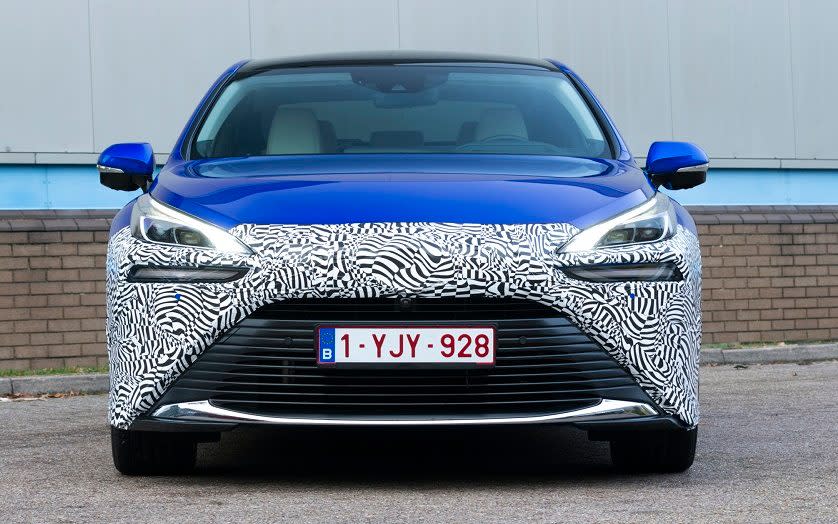
It also has a role to play in electrical grid buffering, home heating and maintaining some sort of local and democratic interest in energy. And as the great fuel cell sage, Beth Dawson, says: “Once you’ve got the hydrogen there, you can do clever things with it.”
Shame that the Government people telling us about our energy future aren’t quite as clever. I’d give them a Toyota Mirai to drive around for a few months. It’s a magnificent machine and of course they’d like it. Like it so much they might wonder why they can’t drive it further because of the current chronic lack of refuelling infrastructure.
You never know, they might even be moved to do something about that…
The facts
(Specifications for Mirai Mk1 in brackets)
Price (without Govt PiCG grant): £53,000 estimated (£66,000)
Max output: 128kW/174PS (114kW/155PS)
Power density: 4.4kW/litre (3.1kW/litre)
Battery type: Lithium-ion (Nickel-metal hydride)
Nominal voltage: 310.8 (244.8)
Energy capacity: 1.24kWh (1.59kWh)
Weight of fuel cell: 44.6kg (46.8kg)
Hydrogen tank capacity: 5.6kg (4.6kg)
Electric motor: Permanent magnet synchronous AC
Maximum power: 134kW/182PS (113kW/154PS)
Maximum torque: 221lb ft (247lb ft)
Top speed: 109mph (111mph)
Acceleration: 0-62mph in 9.2sec (9.6sec)
Range (Japan JC08 mode): 525 miles (404 miles)
For new and used buying guides, tips and expert advice, visit our Advice section, or sign up to our newsletter here
To talk all things motoring with the Telegraph Cars team join the Telegraph Motoring Club Facebook group here

